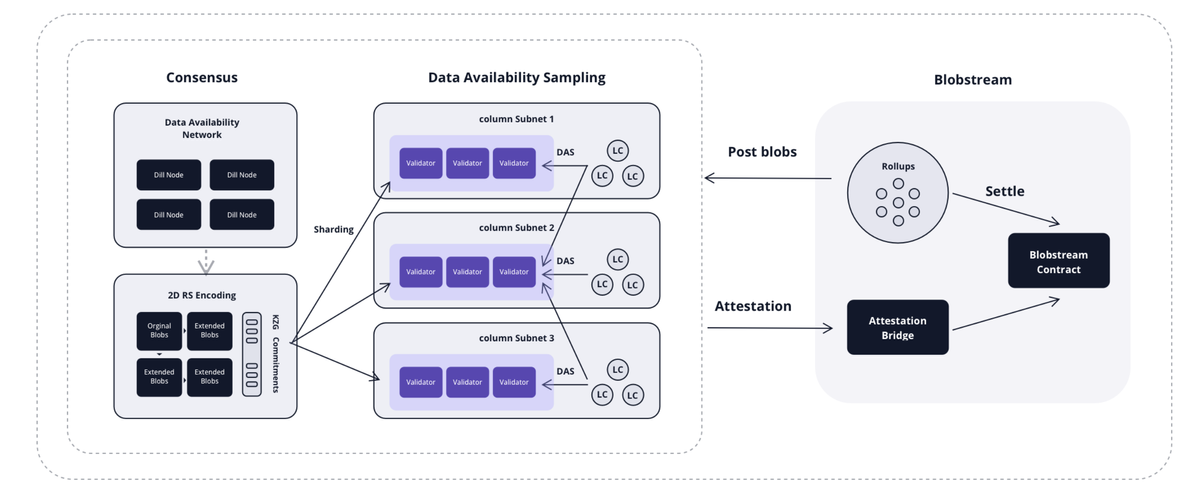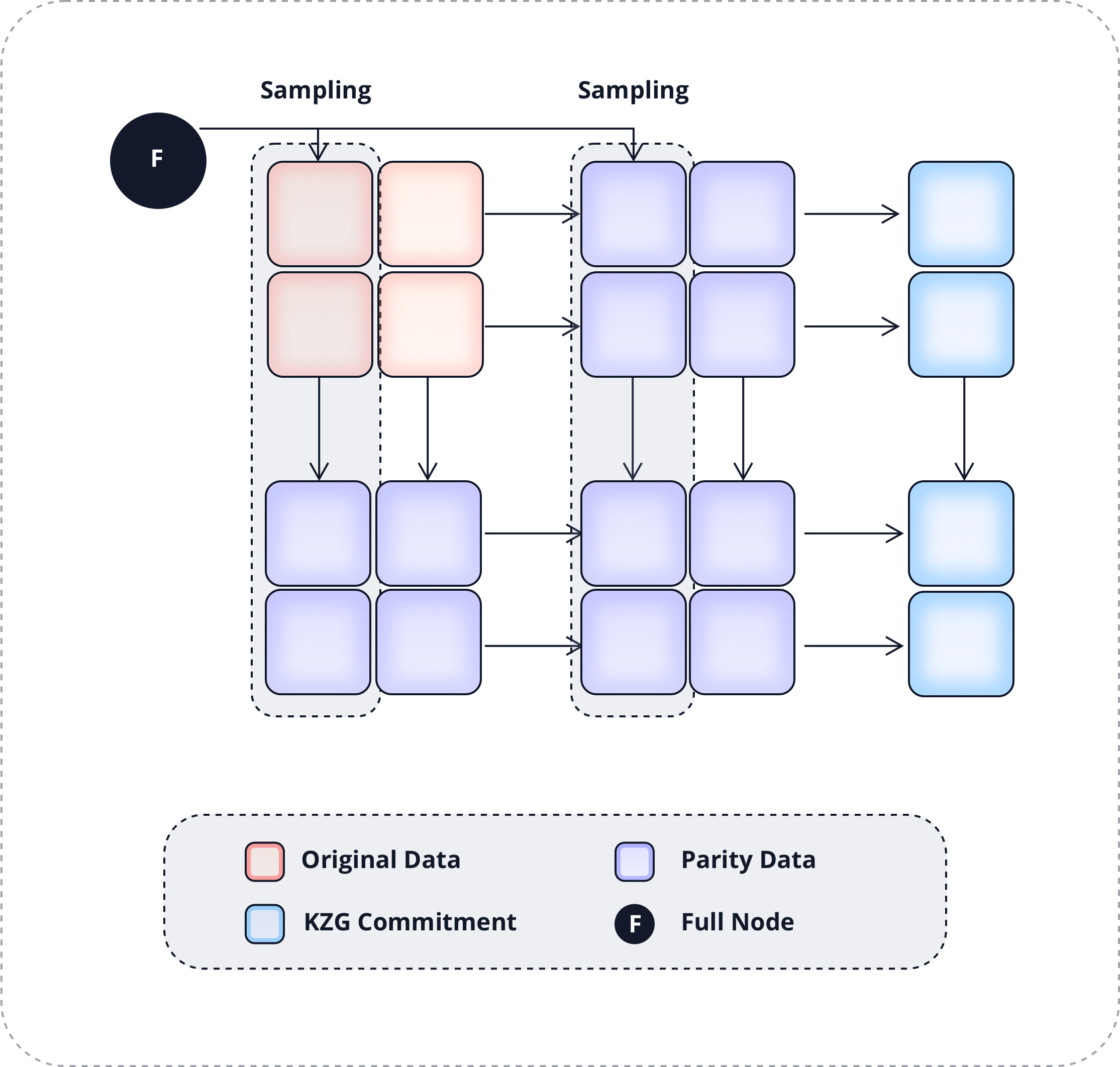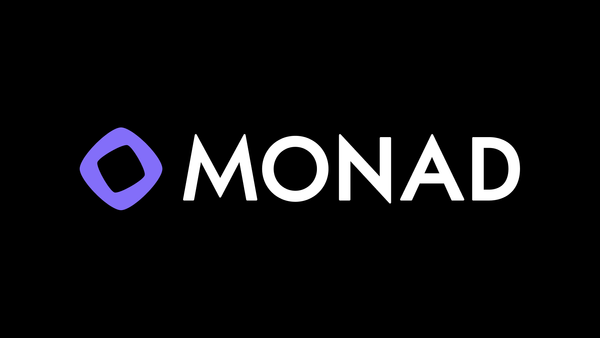Exploring Blobstream: A New Data Availability Solution by Dill

Introduction to Blobstream
The Blobstream technology was invented by Celestia Labs and was first introduced on October 2, 2023. Previously, it was called Quantum Gravity Bridge (QGB). Blobstream is the first data availability solution for Ethereum, allowing developers to build high-performance Layer 2 (L2) solutions by utilizing Celestia's optimized data availability layer, based on the Data Availability Sampling (DAS) technique for scaling.
Blobstream is a data availability technology developed within the Dill system, aimed at providing solutions for storing and verifying data between Rollup networks and Layer 1. Blobstream not only optimizes performance but also enhances security for decentralized applications on the blockchain platform.
How Blobstream Works
- Connecting Rollup and Layer 1
Blobstream acts as a bridge between Rollup networks and Layer 1, allowing rollups to store and verify proven data. This enhances interoperability between different systems within the blockchain.
- Attestation Bridge
The Blobstream system includes an Attestation Bridge, responsible for generating proofs that demonstrate the integrity of the data. These proofs are sent to the Blobstream Contract, enabling rollups to quickly and efficiently verify the validity of the data.
- Managing Blob Data
Data within Dill is fragmented into smaller blocks called "blobs," each with a maximum size of 128KB. Blobstream manages the storage and distribution of these blobs across different subnets within the network.
Supporting Technologies for Blobstream
- KZG Commitments
The KZG (Kate-Zaverucha-Goldberg) technique is used to commit to and verify the integrity of blob data. This ensures that the data remains unchanged during transmission.
- 2D Erasure Coding (EC)
The 2D EC coding technique is applied to optimize data storage and access, allowing for minimized storage space while ensuring data recoverability.
- Data Availability Sampling (DAS)

Blobstream employs DAS to verify data availability without requiring all full nodes to store all data. Only a few light nodes perform random validation, enhancing efficiency and reducing storage costs.
Benefits of Implementing Blobstream
- Enhanced Scalability
With its sharding structure and parallel processing capabilities, Blobstream helps Dill achieve scalability from 10x to 100x compared to other DA networks.
- Support for Decentralized Applications
Through the Blobstream system, Dill provides a robust infrastructure for decentralized applications, promoting the development of the blockchain ecosystem.
- Reduced Transaction Costs
Optimizing the verification and storage processes helps minimize transaction costs for users, making blockchain usage more accessible.
Differences Compared to Other DA Solutions
Blobstream stands out compared to other data availability solutions due to:
- Decentralization: Blobstream shares security with Celestia through a Proof-of-Stake (PoS) consensus system, enhancing decentralization and security for the network.
- Detection of Malicious Behavior: The system can detect if 2/3 of Celestia's validators behave incorrectly by withholding data, allowing for potential slashing measures.
- Gas Cost Savings: Blobstream enables significant savings in gas costs for relayers by aggregating Zero-Knowledge (ZK) proofs together.
Conclusion
Blobstream is an essential component of Dill's architecture, improving availability, security, and overall network performance. With significant advancements in scalability and transaction costs, Blobstream promises to make a substantial contribution to the sustainable development of the blockchain ecosystem in the future.



